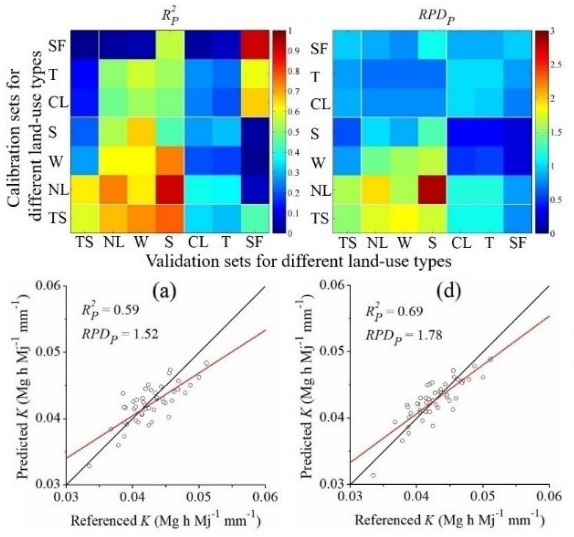Name:Feng Liu
Tell:
Email:liufeng@wbgcas.cn
Organization:Wuhan Botanical Garden
Researchers Evaluate Soil Erodibility for Restored Watershed Using VNIR Spectroscopy
2020-11-27
Soil erosion by water is recognized as a severe environmental problem. The widely, less severe erosion processes could systematically decrease soil quality, cause pollution and silt deposition in reservoirs and river channels. As the inherent factor, soil erodibility factor K is one of the important parameters in soil erosion prediction models and is a high priority in soil research. However, the conventional method of assessing soil erodibility is costly, time-consuming, and method-dependent.
Visible and near-infrared reflectance (VNIR) spectroscopy is a promising alternative to the conventional methods used for determining soil properties. However, few studies have utilized spectral reflectance data to predict K factor. It is necessary to evaluate the ability of VNIR spectroscopy in estimating soil K.
JIANG Qinghu, under the supervision of Prof. LIU Feng from Wuhan Botanical Garden, explored the potential of VNIR spectroscopy in quantifying soil K factor in an ecologically restored watershed. Then, they explored the transferability of the developed models among different land-use types, and developed an improved approach to estimate K factor better.
VNIR spectroscopy could be used as an effective method in predicting K. However, the predictability and transferability of the calibrated models were land-use type dependent. Specifically, models performed well in natural land soils (R2P = 0.74, RPDP = 1.93) but failed in cultivated land soils (R2P = 0.24, RPDP = 0.99).
Furthermore, the results also illustrated that adding multiple related topographic variables to spectral model could slightly increase the accuracies of K factor estimation in natural land, but not for cultivated land. Although the use of VNIR spectroscopy for estimating the K factor was not as accurate as the reference in-situ measurement, it could provide a fast and cost-efficient tool in regional K factor assessment.
The combination of spectrum and environmental variable is an effective improvement of K estimation, which can facilitate the creation of reliable, efficient large-scale soil datasets to improve the understanding of soil erosion and linked processes.
Results were published in Remote Sensing entitled “Use of Visible and Near-infrared Reflectance Spectroscopy Models to Determine Soil Erodibility Factor (K) in an Ecologically Restored Watershed”. This study was funded by the Natural Science Foundation of China and the Chinese National Key Development Program for Basic Research.

Performance of the VNIR spectral models for the soil K estimation (Image by WBG)